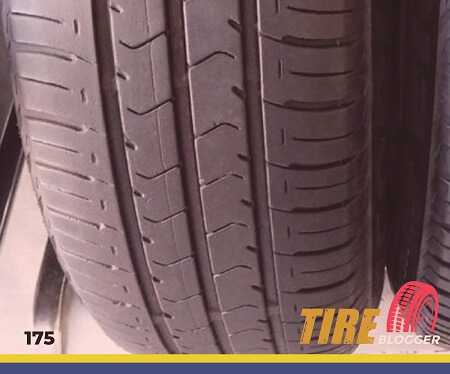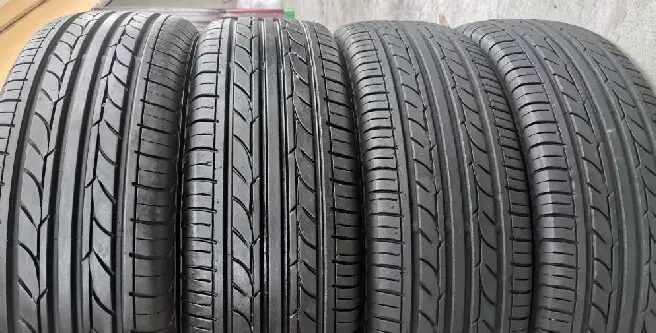175 Vs 195 Tires

The main difference between 175 and 195 tires lies in their tread width, measured in millimeters. This 20mm difference may seem slight, but it significantly influences various aspects of driving performance and vehicle characteristics.
175 Vs 195 Tires Table
To gain a better understanding of the basic variances, we will compare two tires.
| 175 Tire Size | 195 Tire Size |
|---|---|
| Offers a more comfortable ride | Provides better traction on dry roads |
| Generally less expensive | Offers better handling performance |
| Provides better traction in snow, rain, and slush | Better for carrying heavier loads |
| Offers better fuel economy | Generally has a more attractive appearance |
| Recommended rim width range: 5 to 6 inches | Recommended rim width range: 5.5 to 7 inches |
| 20 millimeters smaller | 20 millimeters larger |
| Can be used as a replacement with similar rim widths | Can be used as a replacement with similar rim widths |
Ride Comfort
Ride comfort varies noticeably between 175 and 195 tires. The smaller 175 tires generally offer a smoother experience on highways and urban roads, due to their lower profile.
Conversely, the 195 tires, with their broader width and increased sidewall height, are adept at absorbing impacts, providing a more cushioned ride over rough terrains.

Ground Clearance
Ground clearance is directly impacted by tire size. The larger 195 tires elevate a vehicle higher off the ground, a boon for off-road enthusiasts or those navigating uneven surfaces.
This increase, however, can affect the vehicle’s speedometer accuracy. On the flip side, 175 tires maintain a lower profile, which could lead to potential undercarriage damage when faced with obstacles.
Gas Mileage
Fuel efficiency is a key consideration for many drivers. 175 tires, being narrower with less rotational mass, typically offer better gas mileage by reducing rolling resistance.
The wider 195 tires, in contrast, may slightly decrease fuel economy due to their increased contact area and weight.

Aesthetics Look
Aesthetic preferences play a significant role in tire selection. The sleeker 175 tires can enhance a vehicle’s aerodynamics, while the bolder 195 tires lend a more aggressive appearance, albeit at the cost of aerodynamic efficiency.
Handling & Stability
For those prioritizing handling, the 175 tires provide superior responsiveness and agility on paved surfaces.
However, the 195 tires shine in terms of stability and traction, especially useful in off-road conditions or on uneven terrain.
Noise & Vibration
Noise and vibration levels differ markedly between the two tire sizes. The 175 tires tend to be quieter on smooth roads but may transmit more vibrations from irregular surfaces.
The larger 195 tires, particularly those with aggressive tread patterns, can produce more road noise but also offer better vibration dampening due to their structure.

Durability & Wear
Considering durability, 175 tires may exhibit more even wear and potentially longer life. The 195 tires, while capable of withstanding more significant impacts, can cause accelerated wear on vehicle components due to their heavier weight.
Difference Between 175 and 195 Tires
The main difference between 175 and 195 tires is the section width, with 195 tires being 20mm wider than 175 tires. This difference in width can impact various performance aspects of the vehicle.
Can I Use 175 Tires Instead of 195?
It is possible to use 175 tires instead of 195 tires, as the ideal rim width range for 175 tires (6.0-6.5 inches) overlaps with the minimum rim width for 195 tires (5.5 inches). However, the narrower tires may not provide optimal performance.
It’s vital to weigh certain aspects carefully too. Specifically, ensure new tires have the same aspect ratio and rim diameter as your current set.
Any difference in overall diameter should not exceed 3% to avoid affecting speedometer readings and vehicle dynamics.

Can I Use 195 Tires Instead of 175?
Yes, you can use 195 tires instead of 175 tires. The ideal rim width range for 195 tires (6.0-7.0 inches) overlaps with the ideal range for 175 tires (6.0-6.5 inches), ensuring compatibility.
Also, bear in mind these crucial considerations. Replacement tires need to match your current aspect ratio and rim diameter.
Any variation in overall diameter should stay within 3% to avoid compromising speedometer accuracy and vehicle handling.
Can You Put 175 Tires on 195 Rims?
Yes, you can put 175 tires on rims designed for 195 tires. The ideal rim width range for 195 tires (6.0-7.0 inches) overlaps with the ideal range for 175 tires (6.0-6.5 inches), ensuring proper fitment.
Can You Put 195 Tires on 175 Rims?
It is possible to put 195 tires on rims designed for 175 tires, as the ideal rim width range for 175 tires (6.0-6.5 inches) overlaps with the minimum rim width for 195 tires (5.5 inches). However, using wider tires on narrower rims may affect handling and tire wear.

Meet Caitlin McCormack, a Tire Size Expert and Blogger Passionate About Everything Related to Tires. With Years of Experience in the Tire Industry, Caitlin Has Become an Expert in Tire Sizes and Their Impact on Vehicle Performance.
